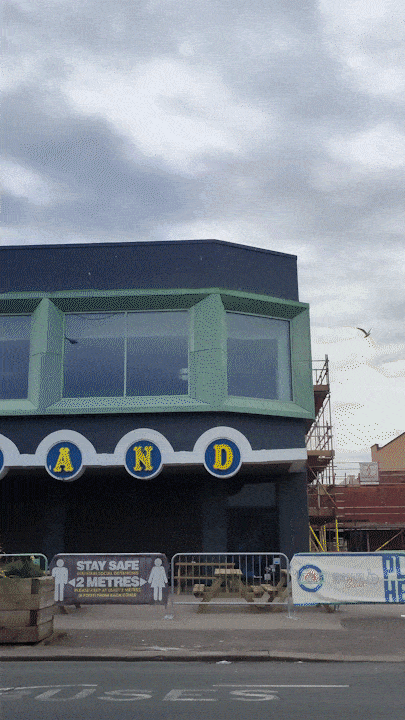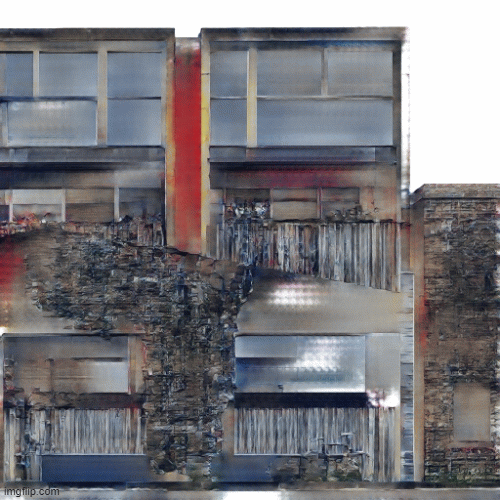Artificial Intelligence Towards a New Urban Typology
The research considers the context of the Morecambe seafront as uniquely positioned for wider economic investment via the transformative new Eden North project (Grimshaw Architects). The research utilises a training dataset (hundreds of 2D orthographic façade photos) of existing architectural buildings along the seafront (including the grade II* listed Wintergardens, train station and 60’s amusement arcades) comparing these with the Eden North proposal, to interpolate and automate a speculative ‘new’ urban form transposed in the empty space between the historic seafront of Morecambe and the Eden North building, sited on the promenade.
The training data and GAN methodology allows existing architectural style to be learnt and speculated upon to automate a new building typology inbetween the proposed Eden North and the existing seafront that is uniquely contextual. The form is altered by a series of multi-optimisation criteria suited to the competing requirements of a wide range of key stakeholders including local business owners, tourists, residents and planning officers.

The new method tests the status of training data and datasets in relation to the intellectual property rights of the original architect author of the designs. The work concludes with a user evaluation of the outcome, speculating on the increasing impact of machine learning and Artificial Intelligence on the role and authorship of the architect.
The method utilises Paperspace, Python, Pix2PixHD and CycleGAN (amongst others) to learn from a dataset of 200 photos of the facades of the seafront of Morecambe to train data in order to anticipate what the ‘in-between’ might become by learning from the existing. The inputs represent a series of 1024×1024 png files, trained against a set of identically filtered images.
We were able to use drawings of the New Eden North proposal to contribute to the dataset images, crossing styles between the ‘new’ and ‘old’.

The images contained herein present a series of very early iterations of training results for the dataset. For further work and development, refer to the Blog: Work In Progress pages.




